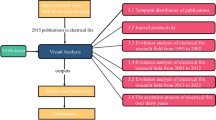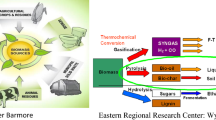Abstract
Fireline intensity is one of the most relevant quantities used in forest fire science. It helps to evaluate the effects of fuel treatment on fire behavior, to establish limits for prescribed burning. It is also used as a quantitative basis to support fire suppression activities. However, its measurement is particularly tricky for different reasons: difficulty in measuring the weight of the fuel consumed in the active fire front, difficulty to evaluate the rate of spread of the fire front, and uncertainty on combustion efficiency. In this study, an innovative and original approach to directly measure the fireline intensity at laboratory scale is proposed. Based on the oxygen consumption calorimetry principle, this methodology is applied here in case of spreading fires, for the first time. It allows for directly measuring the heat released by the fire front. The results are then used to test the famous Byram’s formulation that is generally applied to determine the fireline intensity. Combustion efficiency and effective heat of combustion results are provided. The uncertainty and the use of a full scale calorimeter instead of a bench scale calorimeter for this study are discussed.









Similar content being viewed by others
Abbreviations
- AF:
-
Avena fatua
- FTT:
-
Fire Testing Technology Ltd®
- GS:
-
Genista salzmannii
- HRR:
-
Heat release rate
- LSHR:
-
Large scale heat release rate calorimeter
- OC:
-
Oxygen consumption
- PP:
-
Pinus pinaster
References
Byram GM. Combustion of forest fuels. In: Davis KP, editor. Forest fire: control and use. New York: Mc Graw-Hill; 1959. p. 61–89.
Fites JA, Henson C. Real-time evaluation of effects of fuel-treatments and other previous land management activities on fire behavior during wildfires. Report of the Joint fires science rapid response project. US Forest Service; 2004. p. 1–13.
McAthur AG. Control burning in eucalypt forests. Comm. Aust. For. Timb. Bur. Leafl. No. 80; 1962.
Hammil KA, Bradstock RA. Remote sensing of fire severity in Blue Mountains: influence of vegetation type and inferring fire intensity. Int J Wildland Fire. 2006;15:213–26.
De Luis M, Baeza MJ, Raventos J, Gonzales-Hidalgo JC. Fuel characteristics and fire behaviour in mature Mediterranean gorse shrubland. Int J Wildland Fire. 2004;13:79–87.
Alexander ME, De Groot WJ. Fire behavior in jack pine stands as related to the Canadian Forest Fire Weather Index System. Edmonton: Can. For. Serv., North. For. Cent.; 1988. Poster.
Palheiro PM, Fernandes P, Cruz MG. A fire behaviour-based fire danger classification for maritime pine stands: comparison of two approaches. In: Viegas DX, editor. Proc. V Int. Conf. on Forest Fire Research; 2006. CD-ROM.
Cheney NP. Quantifying bushfires. Math Comput Model. 1990;13:9–15.
Balbi JH, Rossi JL, Marcelli T, Santoni PA. A 3D physical real-time model of surface fires across fuel beds. Combust Sci Technol. 2007;179:2511–37.
Zhou X, Mahalingam S, Weise D. Experimental study and large eddy simulation of effect of terrain slope on marginal burning in shrub fuel beds. Proc Combust Inst. 2007;31:2547–55.
Morvan D, Meradji S, Accary G. Physical modelling of fire spread in grasslands. Fire Safety J. 2008;44:50–61.
Mell WE, Jenkins MA, Gould J, Cheney P. A physics based approach to modeling grassland fires. Int J Wildland Fire. 2007;16:1–22.
Alexander ME. Calculating and interpreting forest fire intensities. Can J Bot. 1982;60:349–57.
Nelson RM, Adkins CW. Flame characteristics of wind-driven surface fires. Can J For Res. 1986;16:1293–300.
Babrauskas V, Peacock RD. Heat release rate: the single most important variable in fire hazard. Fire Safety J. 1992;18:255–92.
International Standard. Fire tests—reaction to fire—part 1: rate of heat release from building products (cone calorimeter method), ISO 5660-1:1993. Geneva: International Organization for Standardization; 1993.
ASTM E2058-03. Standard test method for measurement of synthetic material flammability using a fire propagation apparatus; 2003.
White RH, Dietenberger MA. Fire Safety. Wood handbook—wood as an engineering material. Gen. Tech. Rep. FPL-GTR-113. Madison: U.S. Department of Agriculture, Forest Service, Forest Products Laboratory; 1999. 16 p.
Schemel C, Simeoni A, Biteau H, Rivera J, Torero JL. A calorimetric study of wildland fuels. Exp Therm Fluid Sci. 2008;32(7):1381–9.
Bartoli P, Simeoni A, Biteau H, Torero JL, Santoni PA. Determination of the main parameters influencing forest fuel combustion dynamics. Fire Safety J. 2010. doi:10.1016/j.firesaf.2010.05.002.
Babrauskas V. Effective heat of combustion for flaming combustion of conifers. Can J For Res. 2006;36:659–63.
Babrauskas V, Grayson SJ. Heat release in fires. London: Interscience Communications Ltd; 2009. 623 p.
Agueda A, Liodakis S, Pastor E, Planas E. Characterization of the thermal degradation and heat of combustion of Pinus halepensis needles treated with ammonium-polyphosphate-based retardants. J Therm Anal Calorim. 2009;98:235–43.
Wu Q, Zhang C, Liang R, Wang B. Combustion and thermal properties of epoxy/phenyltrisilanol polyhedral oligomeric silsesquioxane nanocomposites. J Therm Anal Calorim. 2010;100:1009–15.
Kim SC, Bundy MJ. Numerical model of a large-scale oxygen consumption fire calorimeter. J Therm Anal Calorim. 2008;93:1013–9.
Rothermel RC. A mathematical model for predicting fire spread in wildland fuels. USDA For. Serv. Res. Pap. INT-115; 1972.
Huggett C. Estimation of the rate of heat release by means of oxygen consumption. J Fire Flammability. 1980;12:61–5.
Babrauskas V. Heat release rates. In: Quincy MA, Di Nenno JP, Walton WD, editors. The SFPE handbook of fire protection engineering. 3rd ed. National Fire Protection Association and The Society of Fire Protection Engineers; 2002. p. 1–37.
Parker WJ. Calculations of the heat release rate by oxygen consumption for various applications. NBSIR 81-2427-1; 1982.
Bryant RA, Mulholland GW. A guide to characterizing heat release rate measurement uncertainty for full-scale fire tests. Fire Mater. 2008;32:121–39.
Janssens ML, Measurement needs for fire safety proceedings. In: Proceedings of an International workshop. NISTIR 6527; 2000. p. 186–200.
International Standard. Fire tests—full scale room test for surface products, ISO 9705. Geneva: International Organization for Standardization; 1993.
Axelsson J, Andersson P, Lönnermark A, Van Hees P, Wetterlund I. Uncertainties in measuring heat and smoke release rates in the Room/Corner test and the SBI. Borås: Swedish National Testing and Research Institute; 2001. 41 p. SP report 2001:04.
Biteau H, Steinhaus T, Schemel C, Simeoni A, Marlair G, Bal N, Torero JL. Calculation methods for the heat release rate of materials of unknown composition. In: Fire safety science—proceedings of the ninth international symposium, international association for fire safety science; 2008. p. 1165–76.
Biocombustibles solides—détermination du pouvoir calorifique. AFNOR NF EN 14918; 2010.
Moro C. Détermination des caractéristiques physiques de particules de quelques espèces forestières méditerranéennes. INRA PIF2006-06; 2006.
Karlsson B, Quintiere J. Enclosure fire dynamics. CRC Press LLC; 2000.
Acknowledgements
This study was carried out within the scope of project PROTERINA-C supported by the EU under the Thematic 3 of the Operational Program Italia/France Maritime 2007–2013, contract (#G25I08000120007).
Author information
Authors and Affiliations
Corresponding author
Rights and permissions
About this article
Cite this article
Santoni, PA., Morandini, F. & Barboni, T. Determination of fireline intensity by oxygen consumption calorimetry. J Therm Anal Calorim 104, 1005–1015 (2011). https://doi.org/10.1007/s10973-010-1256-0
Received:
Accepted:
Published:
Issue Date:
DOI: https://doi.org/10.1007/s10973-010-1256-0




